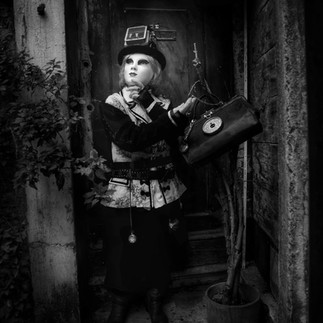The Cask of Amontillado アモンティラードの樽
- Robin Yong

- Mar 18, 2024
- 3 min read

"The Cask of Amontillado" is a short story by the American writer Edgar Allan Poe, first published in the November 1846 issue of Godey's Lady's Book, which was, at the time, the most popular periodical in America. The story, set in an unnamed Italian city at carnival time, is about a man taking fatal revenge on a friend who, he believes, has insulted him. Like several of Poe's stories, and in keeping with the 19th-century fascination with the subject, the narrative follows a person being buried alive – in this case, by immurement. As in "The Black Cat" and "The Tell-Tale Heart", Poe conveys the story from the murderer's perspective.
Montresor invites Fortunato to sample amontillado that he has ostensibly purchased without proving its authenticity. Intrigued by the promise of fine wine and having already drunk enough to impair his judgment, Fortunato follows him into the Montresor family vaults, which also serve as catacombs. However, there is no amontillado; Montresor instead lures him into a trap, entombing him alive within the catacombs. At the end of the story, Montresor reveals that fifty years have passed since he took revenge and Fortunato's body has not been disturbed.

The story's narrator, a nobleman named Montresor, describes his revenge against fellow noble Fortunato. Angry over numerous injuries and an unspecified insult, Montresor resolves to avenge himself without being caught, and also to make sure that Fortunato knows he is responsible.
During the annual Carnival season, Montresor finds a drunken Fortunato and asks for his help in authenticating a recently purchased pipe (about 130 gallons, or 492 litres) of what has been described to him as Amontillado wine. As the two descend to the wine cellars and catacombs beneath Montresor's home, Montresor expresses concern over Fortunato's persistent cough and the effect that the dampness will have on his health. An undeterred Fortunato presses on, intent on sampling the Amontillado, and Montresor gives him more wine to keep him inebriated. Montresor describes his family coat of arms: a golden foot in a blue background crushing a snake whose fangs are embedded in the foot's heel, with the motto Nemo me impune lacessit ("No one provokes me with impunity"). At one point, Fortunato makes a gesture that Montresor does not recognize and deduces that Montresor is not a mason. Montresor shows him a trowel as a joke, deliberately confusing Freemasonry with the profession of stonemasonry.
They arrive at a niche deep within the catacombs, where Montresor claims the Amontillado is stored. When Fortunato ventures inside, Montresor chains him to the wall, having devised the Amontillado ruse to lure him into this trap. Montresor sets to work walling up the niche, using supplies of stone and mortar he had previously hidden nearby. Fortunato quickly sobers up and tries to escape, but Montresor mocks his cries for help, knowing that no one can hear them. While Montresor continues to work, Fortunato tries to persuade Montresor to release him, first by suggesting that they treat the incident as a practical joke, and finally making one last desperate plea. As he falls silent, Montresor completes the wall and moves a pile of bones to hide it, feeling a sickness of heart that he dismisses as a reaction to the dampness of the catacombs.
Stating that the niche and Fortunato's body have stood undisturbed for 50 years, Montresor concludes his account by saying, "In pace requiescat!" ("May he rest in peace!").
Scholars have noted that Montresor's reasons for revenge are unclear and that he may simply be insane. However, Poe also leaves clues that Montresor has lost his family's prior status and blames Fortunato. Further, Fortunato is depicted as an expert on wine, which Montresor exploits in his plot, but he does not display the type of respect towards alcohol expected of such experts. Poe may have been inspired to write the story by his own real-life desire for revenge against contemporary literary rivals. The story has been frequently adapted in multiple forms since its original publication.
My teacher Ms Florine Houee has been coming to the annual Venice Carnevale for more than 20 years now. She will often bring 3 or 4 costumes, usually one of her fairy tale theme, another dedictaed to steampunk and one or 2 others so she can easily pair up with other costumers for better photographs and more fun. This year, she has a slightly darker costume with the skeletal remains entombed in a wall on her hat. The Cask of Amontillado - a very famous and darker tale of the Venice Carnevale...
I oped to present the series in monochrome to better suit the era when the story was first published....


















Comments